Introduction to Venison Backstrap Recipes
Overview of Venison Backstrap
Venison backstrap Recipes, often hailed as the prime cut of deer meat, stands out for its tenderness and rich flavor. This lean meat is a top choice for those who appreciate game due to its versatility and health benefits. It’s particularly noted for being high in protein and low in fat, making it an excellent alternative to more common meats like beef or pork.
Popularity and Culinary Prestige
The culinary prestige of venison backstrap continues to grow as more chefs and home cooks discover its potential. Its versatility spans from a straightforward sear to intricate culinary creations, all unveiling the bold essence it carries. For tips on selecting the best quality venison, check out this comprehensive guide on How to Choose Quality Venison. Whether seared, roasted, or incorporated into a gourmet recipe, venison backstrap offers a delightful dining experience that stands out in the culinary world.
Purpose of the Article
The objective of this piece is to delve into an array of culinary possibilities and techniques uniquely designed for venison backstrap. From basic methods perfect for novices to more advanced culinary adventures, there’s something here for everyone. For those new to venison or looking to refine their cooking skills, you’ll find invaluable information here. Also, visit Understanding LSI and NLP for Better SEO to learn how these techniques can enhance your cooking content.
Whether you are a seasoned chef or a weekend warrior in the kitchen, mastering venison backstrap recipes will add an impressive dish to your culinary repertoire. This opening sets the platform for a comprehensive exploration into the realm of venison, priming you to venture through diverse recipes that accentuate this extraordinary meat. Stay tuned for detailed recipes, tips on storage and maintenance, dietary adaptations, and answers to frequently asked questions that will help you make the most of your venison backstrap cooking experience.
For those interested in exploring more about venison, check out Venison Recipes and Tips for a collection of delicious ideas. Additionally, the Nutritional Benefits of Venison provides a deeper insight into why venison is a healthy choice.
Basic Recipe for Venison Backstrap
Print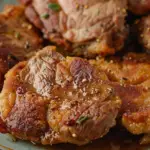
Classic Fried Venison Backstrap
- Total Time: 1 hour 35 minutes
- Yield: 4 servings 1x
- Diet: Gluten Free
Description
A mouth-watering fried venison backstrap recipe that combines tender slices with a crispy, seasoned coating. Perfect for a hearty meal that showcases the best of venison.
Ingredients
- 1 (2 pound) venison backstrap, cut into 1/4 inch thick slices
- 2 ½ cups milk, divided
- 2 tablespoons hot pepper sauce
- 3 cups vegetable oil for frying
- 3 cups all-purpose flour
- 2 tablespoons salt
- 1 tablespoon ground black pepper
- 2 eggs
Instructions
- Marinate the venison slices in 1 cup of milk and hot pepper sauce for 1 hour. This tenderizes the meat and adds flavor.
- In a large skillet, heat the vegetable oil over medium heat. Ensure the oil is hot enough for frying.
- In a shallow dish, combine the flour, salt, and black pepper. This mixture will create the crispy coating.
- In another bowl, whisk the eggs with the remaining 1 ½ cups of milk. This helps the coating adhere to the venison.
- Dredge the venison slices in the flour mixture, dip in the egg mixture, then dredge in the flour mixture again for an extra crispy layer.
- Fry the coated venison slices in the hot oil until golden brown and crispy, about 3-4 minutes per side. This ensures a perfect, crunchy texture.
- Drain on paper towels and serve hot. Enjoy with your favorite dipping sauce or as part of a larger meal.
Notes
Ensure the oil is hot enough to avoid a soggy coating. Serve with a side of mashed potatoes or a fresh salad for a complete meal.
- Prep Time: 1 hour 15 minutes
- Cook Time: 20 minutes
- Category: Main Course
- Method: Frying
- Cuisine: American
Nutrition
- Serving Size: 1 serving
- Calories: 450
- Sugar: 3g
- Sodium: 900mg
- Fat: 25g
- Saturated Fat: 5g
- Unsaturated Fat: 18g
- Trans Fat: 0g
- Carbohydrates: 35g
- Fiber: 2g
- Protein: 30g
- Cholesterol: 125mg
Keywords: Venison Backstrap
This classic fried venison backstrap recipe is a must-try for those looking to enjoy the rich flavor and tender texture of venison. Using basic ingredients and clear instructions, this recipe suits both beginner and expert cooks alike.
STEPS
Step 1
Gather the ingredients.

Step 2
Arrange the venison slices in a shallow bowl, then add 2 cups of milk and a splash of hot sauce. Mix to ensure even coating, cover the bowl, and let the venison marinate for 1 hour.
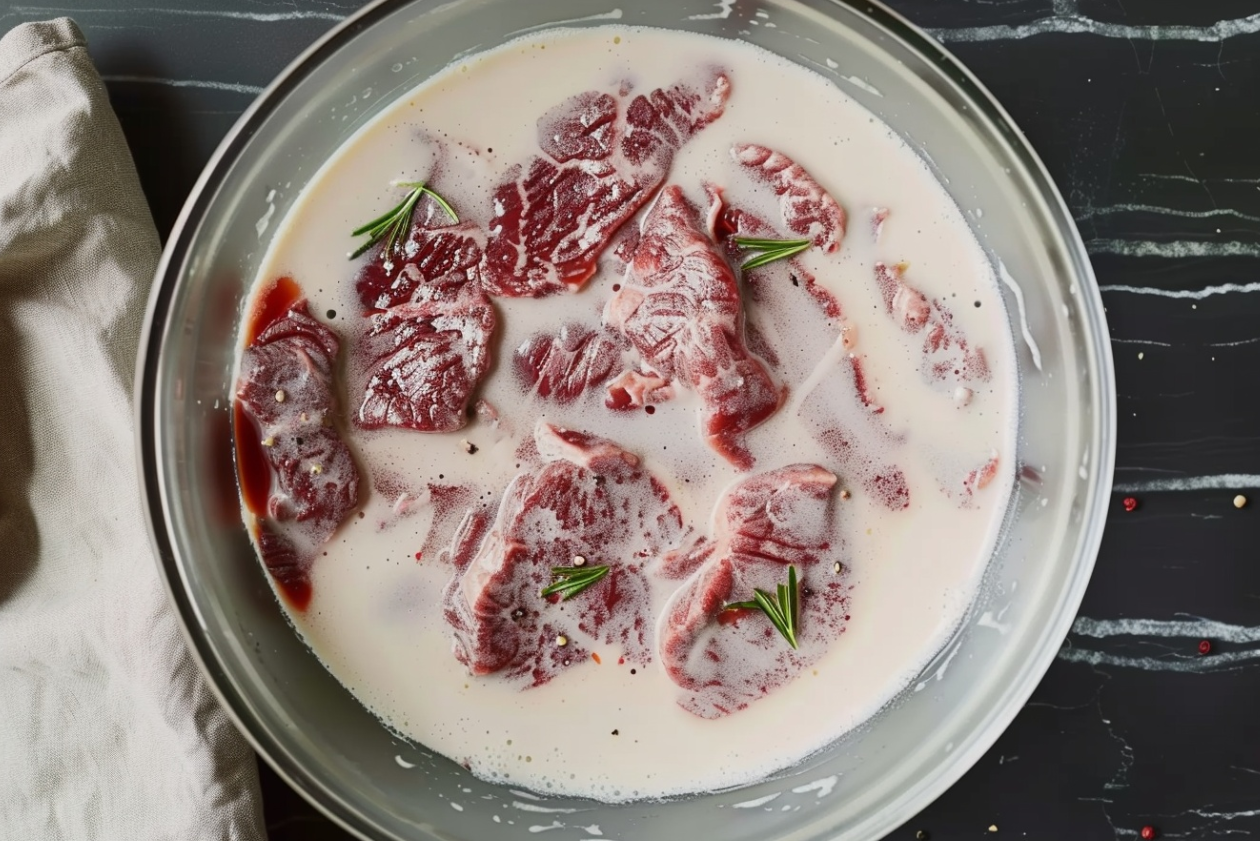
Step 3
Warm vegetable oil in an electric fryer or skillet until it reaches a temperature of 325 degrees F (165 degrees C).
Step 4
Create a dredging station: In one shallow bowl, combine flour, salt, and pepper. In another shallow bowl, whisk together eggs and the remaining 1/2 cup of milk.
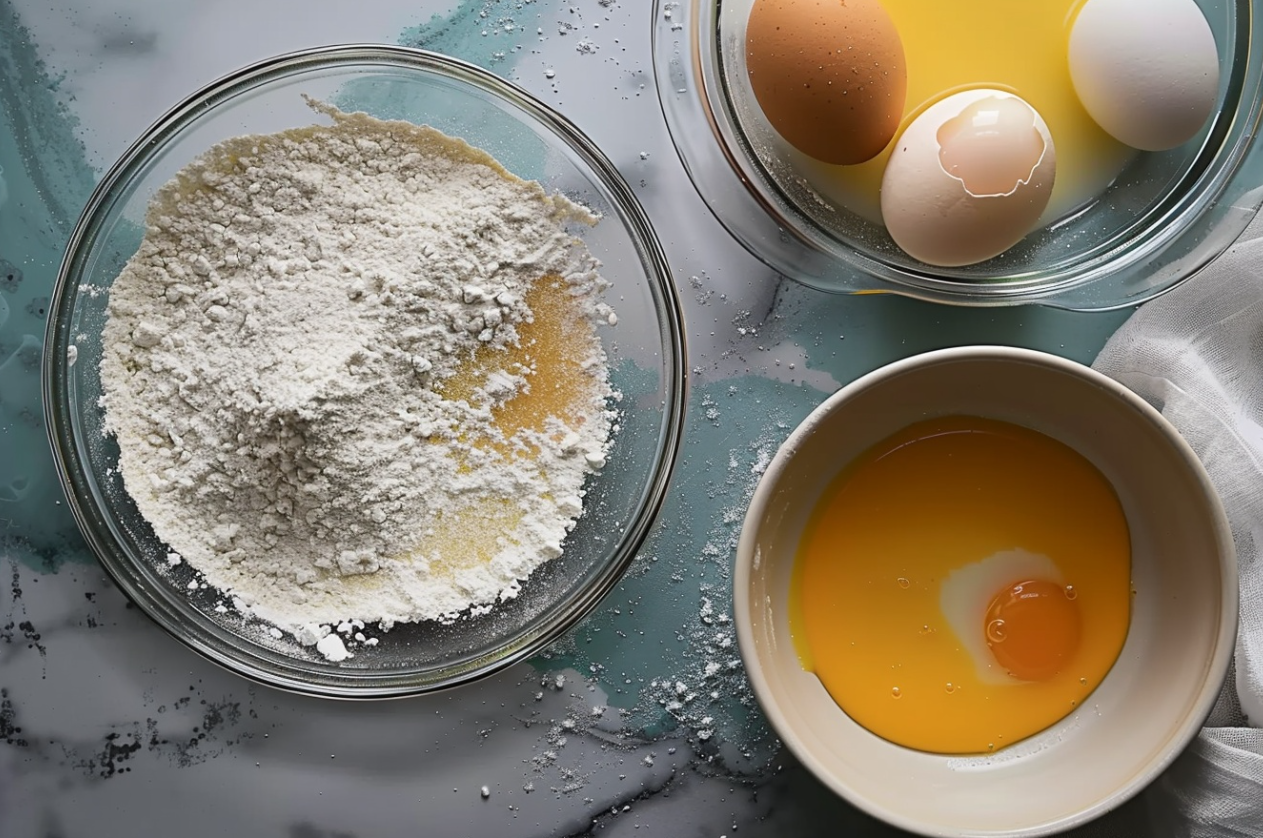
Step 5
Coat the venison slices by first dipping them into the flour mixture, followed by the egg mixture, and then back into the flour mixture. Gently shake off any excess flour.
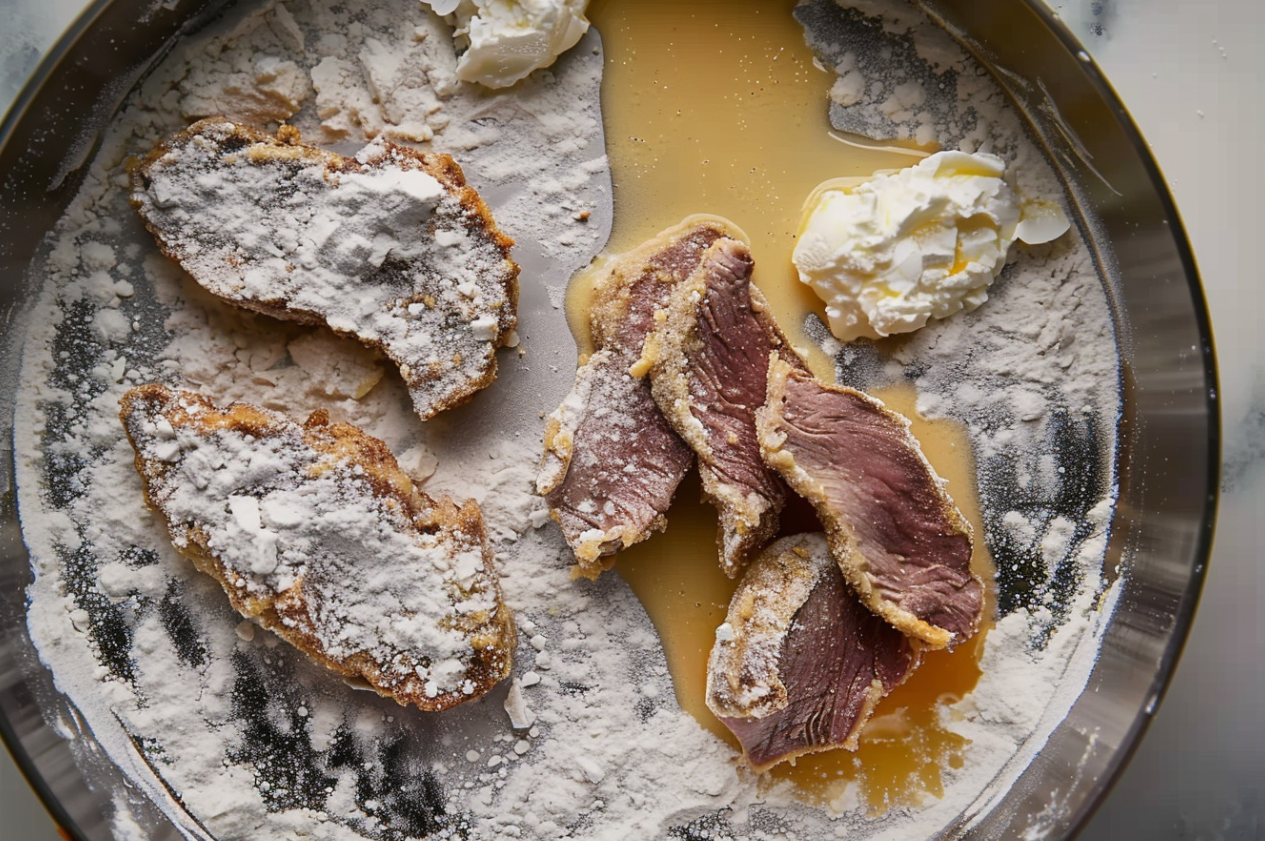
Step 6
Cook in the hot oil until each side is lightly browned, approximately 3 minutes per side. Using tongs, remove the venison and let it drain briefly on paper towels before serving.
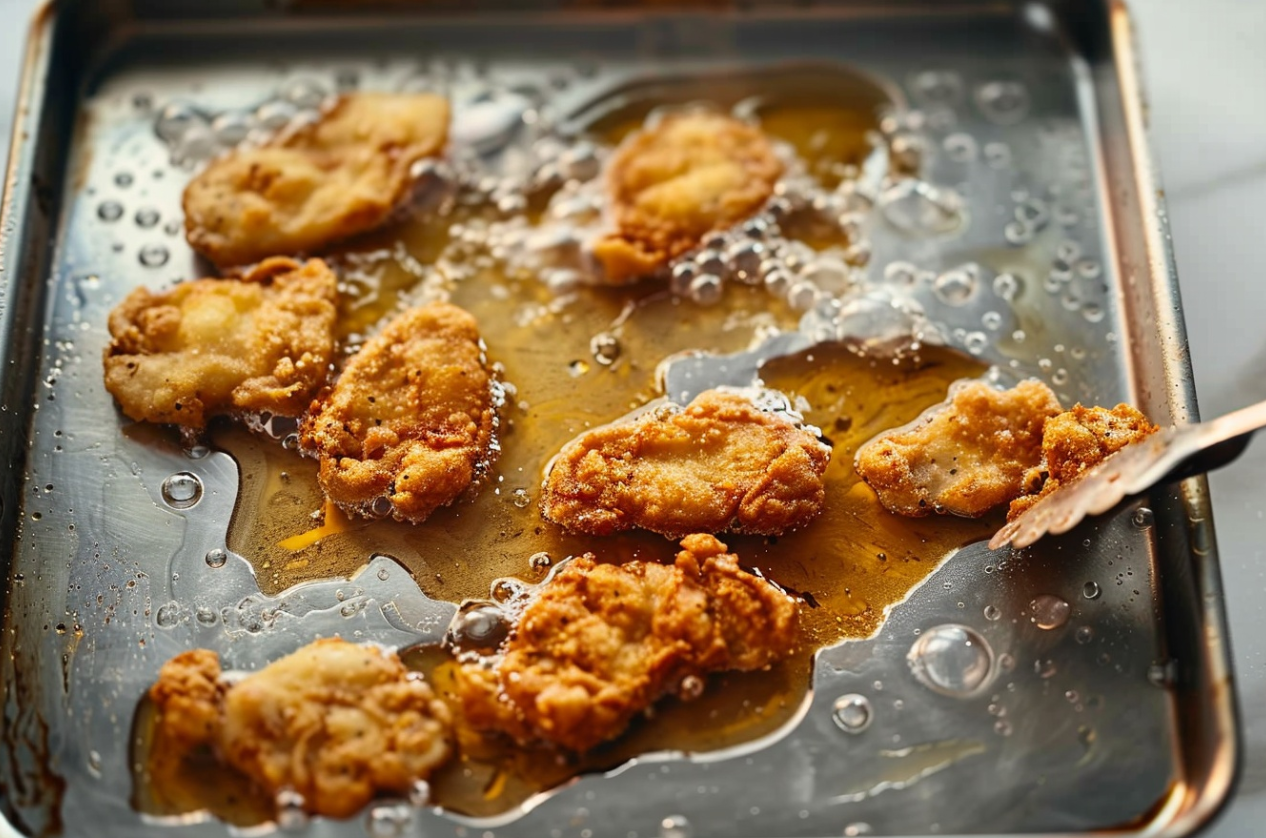
Step 7
Enjoy!
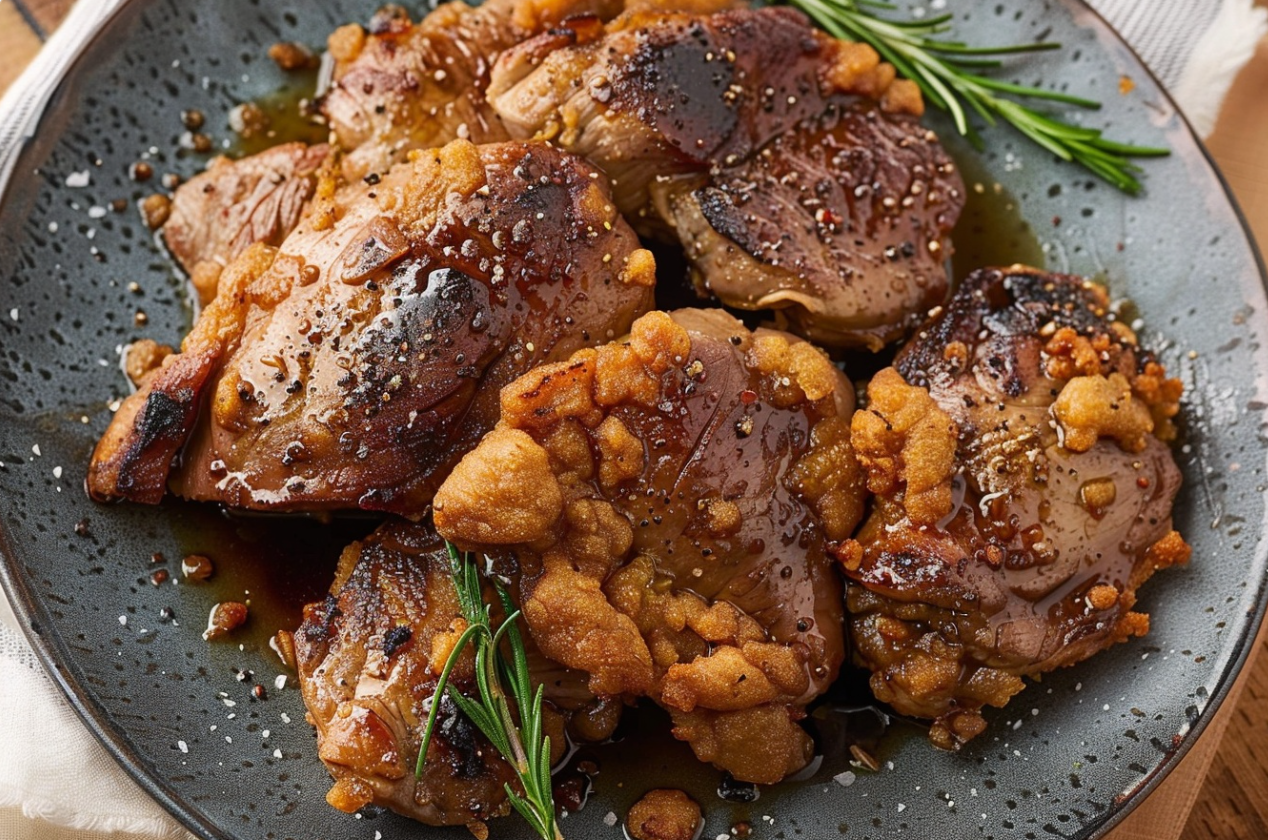
Mastering Advanced Techniques for Cooking Venison Backstrap
Marinating Techniques
Marinating venison backstrap not only boosts its flavor but also tenderizes the meat, resulting in a juicier, more enjoyable dish. Crafting a stellar marinade for venison entails blending acidic tangs like vinegar or citrus juices, oils, and an array of herbs and spices to harmonize with its distinctive gaminess. Let the flavors mingle for hours, or even overnight, allowing the essence to infiltrate every fiber deeply.
Smoking Venison Backstrap
Smoking adds a unique depth of flavor that is especially appealing with venison. To smoke venison backstrap, first season it with salt, pepper, and a rub of your choice. Fire up your smoker to 225 degrees Fahrenheit and imbue the meat with the essence of smoke until it reaches the sought-after internal temperature of 145 degrees Fahrenheit. This slow-cooking method not only infuses the venison with a smoky aroma but also keeps it moist and tender.
Sous Vide Method
Sous vide is an exceptional method for cooking venison backstrap to perfection. Seal the meat in a vacuum and immerse it in a precisely calibrated water bath, typically around 131 degrees Fahrenheit for a medium-rare nirvana, ensuring uniformity sans overcooking. Following the sous vide journey, swiftly sear the venison in a sizzling skillet, crafting a tantalizing crust that harmonizes with its succulence.
These advanced techniques for preparing venison backstrap not only broaden your culinary skills but also enhance the dining experience by presenting the meat in the best possible way. Be it through marinades, smokiness, or sous vide finesse, each technique unfolds distinct nuances, rendering venison backstrap a savory indulgence for any occasion. As you master these techniques, you’ll find that venison backstrap can become a versatile and cherished ingredient in your cooking repertoire. For more advanced recipes, visit, cookingwhite.
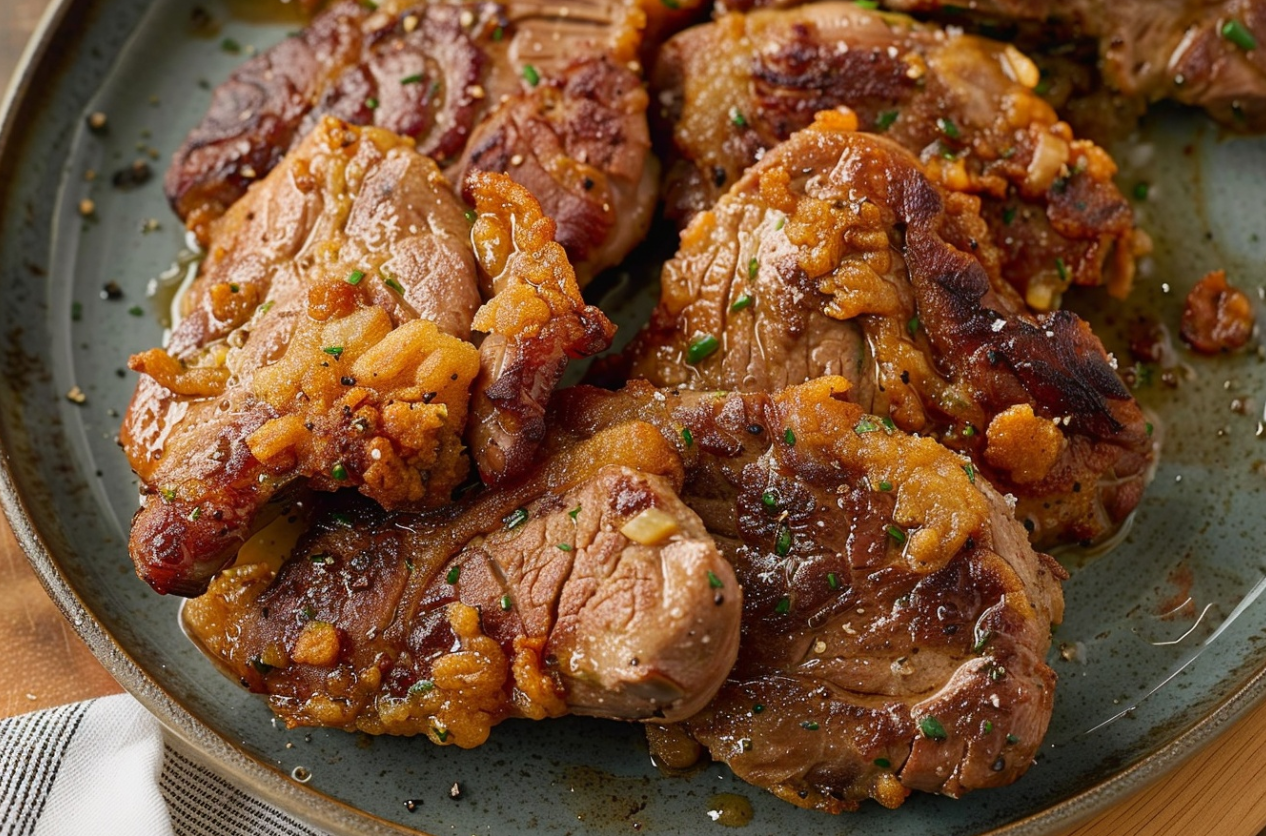
Maintenance and Storage Tips for Venison Backstrap Recipes
Proper Handling and Storage
To uphold the integrity of venison backstrap, adept handling and storage practices are paramount. Once you’ve acquired the meat, cool it quickly to inhibit bacterial growth. For best results, store the venison in a refrigerator at temperatures below 40 degrees Fahrenheit and use it within three to five days.
Freezing Tips
Freezing is an effective way to extend the shelf life of venison backstrap. Wrap the meat tightly in freezer paper or vacuum-seal it to prevent freezer burn and preserve its flavor and texture. When properly stored, venison can endure the icy confines of the freezer for up to a year. When the time is nigh, thaw the venison within the chill embrace of the refrigerator, preserving both safety and quality.
Reheating Procedures
When reheating cooked venison backstrap, the key is to do so gently to prevent it from drying out. Reheat only the amount you plan to eat, preferably in a moist environment like a covered dish with a bit of broth in the oven or on a low heat setting in the microwave. This ritual safeguards moisture, ensuring tender succulence upon each savory bite.
Implementing these maintenance and storage tips will significantly enhance your experience with venison backstrap, ensuring that every dish maintains its optimal flavor and texture. By adhering to these guidelines, you can enjoy delicious, safe, and high-quality venison long after your initial preparation. As you become more adept at handling game meat, these practices will become second nature, further elevating your culinary endeavors with venison.
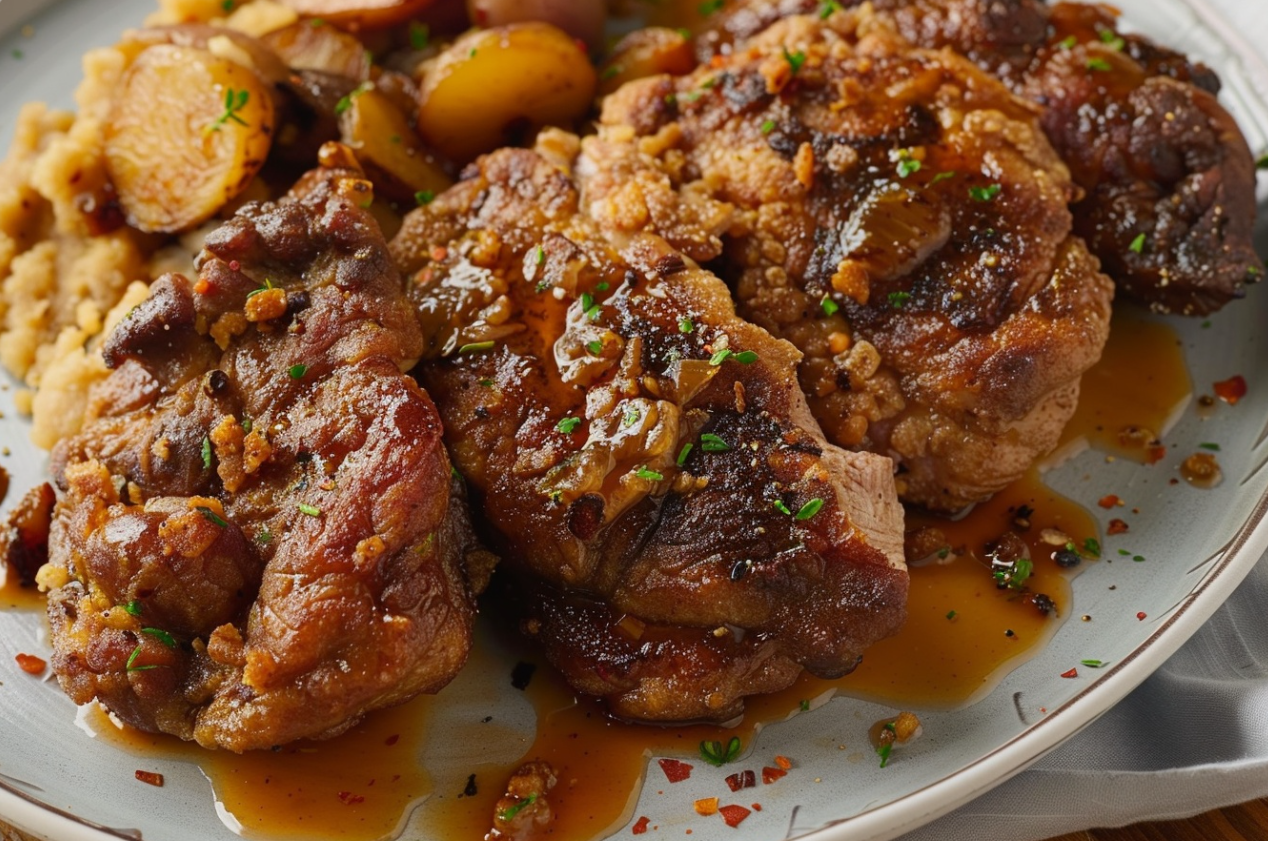
Dietary Adaptations for Venison Backstrap Recipes
Gluten-Free Options
Creating gluten-free dishes with venison backstrap is straightforward, as venison is naturally gluten-free. To ensure the entire dish remains gluten-free, use seasonings and marinades that are certified gluten-free, and thicken sauces with cornstarch or arrowroot instead of flour.
Low-Carb Venison Recipes
Venison backstrap emerges as a beacon for aficionados of low-carb culinary journeys. To keep the meal low-carb, focus on using fresh herbs, spices, and healthy fats for cooking and seasoning. Accompany the venison with low-carb vegetables like spinach or asparagus instead of starchy sides.
Paleo-Friendly Preparations
The Paleo diet favors whole, unprocessed foods, making venison backstrap a perfect component. For Paleo-friendly recipes, cook the venison with natural fats like olive oil or coconut oil, and serve it with a bounty of roasted or raw vegetables and natural sauces made from scratch.
By adapting venison backstrap recipes to meet various dietary needs, you can enjoy this lean, flavorful meat regardless of your eating plan. These adaptations not only ensure that the dishes are inclusive but also maintain the natural, robust flavor of venison, making it a versatile choice for diverse diets. As you explore these dietary modifications, you’ll find that venison can seamlessly integrate into your meal planning, offering delicious, healthy options for any occasion.

Frequently Asked Questions (FAQs) About Venison Backstrap Recipes
Choosing the Right Cut
The art of selection guarantees recipes that resonate with both flavor and tenderness.The tactile test is crucial; firmness denotes quality, while a mild gaminess signals pristine condition. Picking the paramount cut entails selecting deep crimson hues adorned with delicate veins of fat, signifying freshness and excellence.
To best enjoy venison backstrap, cooking it to the proper temperature is crucial. Aim for an internal temperature of 135°F for that coveted medium-rare splendor, then grant it a moment of repose. This interlude allows the juices to dance freely, infusing each morsel with a symphony of succulence. Overcooking can quickly lead to a tough and less enjoyable meal.
Pairing with Sides
Venison backstrap pairs excellently with a wide array of side dishes. For a balanced meal, consider options such as roasted root vegetables, wild rice, or a fresh green salad. The robust flavor of venison goes particularly well with slightly sweet or earthy sides, enhancing the overall dining experience.
Answering these common questions can help both novice and experienced cooks make the most of their venison backstrap dishes. By understanding the nuances of choosing, preparing, and serving venison, you can elevate your meals and ensure every dish is a success. Whether you’re trying out new recipes or sticking to traditional methods, these tips will help you achieve delicious results every time.
Choosing the Right Cut
- What should I look for when purchasing venison backstrap? Seek out cuts adorned in regal red, a whisper of fat, and an aroma devoid of overpowering gaminess. A tactile inspection of firmness and a subtle scent ensures quality procurement.Top-notch venison guarantees that your culinary creations are not just delicious but also tenderized to perfection.
Cooking Times and Temperatures
- How long should I cook venison backstrap? For medium-rare delight, let the backstrap ascend to 135°F internally, requiring a gentle embrace of 10-15 minutes depending on thickness. Honor the process with a brief hiatus, allowing the essence to weave its magic post-cooking.
- How can we best ensure that venison backstrap retains its succulence without succumbing to overcooking? The trusted ally, the meat thermometer, stands sentinel against culinary calamity. Given its lean nature, venison is prone to desiccation under prolonged heat, hence the vigilance against overzealous cooking.
Pairing with Sides
- What companions best accompany venison backstrap on the culinary stage? Revel in the symphony of flavors with roasted roots, wild rice, or the tart embrace of berry compote. Earthy sides like mushrooms or squash also complement the rich taste of the meat.
Marinades and Seasonings
- What are some effective marinades for venison backstrap? A marinade combining acidic elements (like balsamic vinegar or lemon juice), oil, and aromatic herbs (such as rosemary and garlic) works well. These ingredients help to tenderize and enhance the meat’s flavor.
- How can I season venison if I want to keep it simple?
Enhancing the natural flavors of venison can be as simple as seasoning with salt, pepper, and a bit of olive oil.
For a bit of extra flair, add a sprinkle of fresh herbs just before serving.
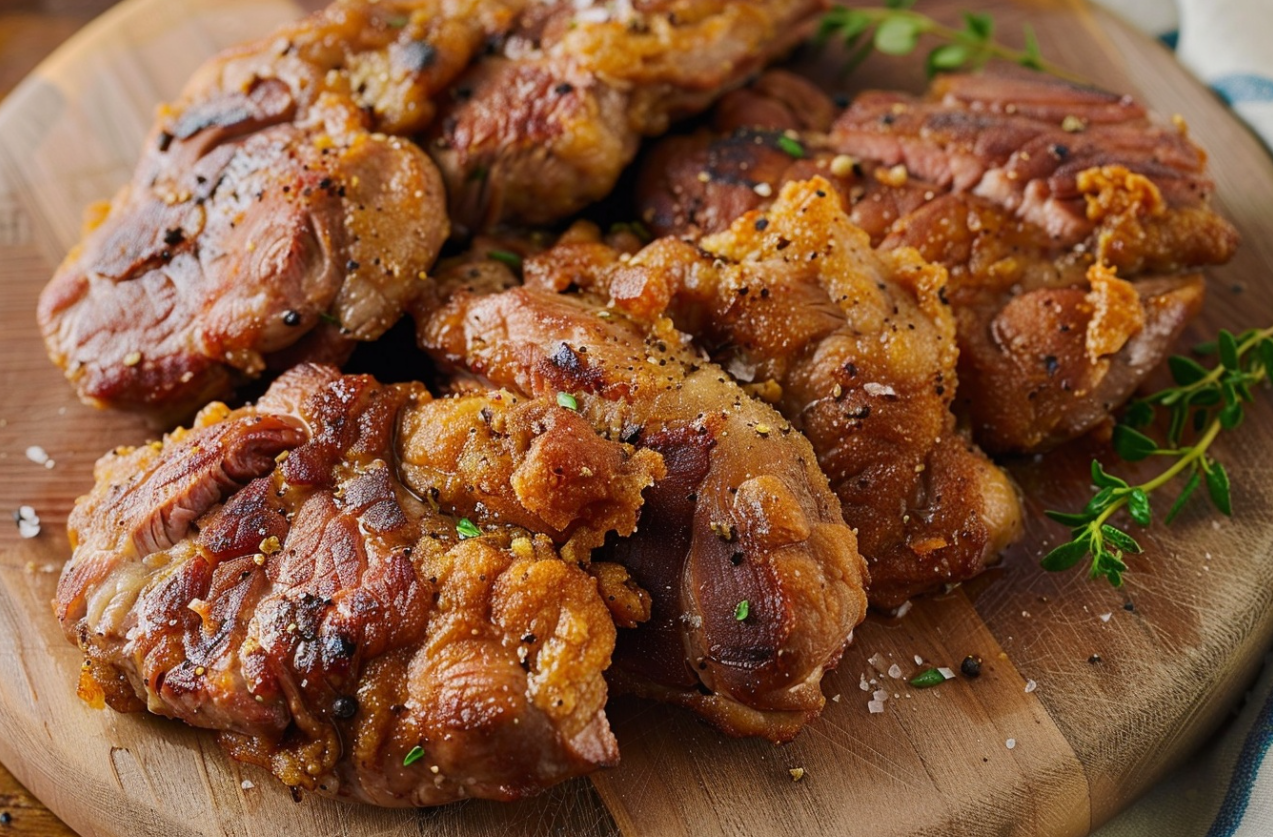
Conclusion: Mastering Venison Backstrap Recipes
Celebrating the Culinary Journey
Exploring the variety of ways to prepare venison backstrap has unveiled the versatility and supreme taste of this prized game meat. From grilling and roasting to advanced techniques like smoking and sous vide, each method enriches the flavor and enhances the overall dining experience.
Embracing Dietary Variations
Adapting venison recipes to fit dietary requirements such as gluten-free, low-carb, and Paleo diets has shown that venison backstrap is not only a versatile but also a healthful choice. These adaptations ensure a gastronomic symposium where all can revel in the splendor of venison, regardless of dietary predilections.
Ensuring Quality with Proper Techniques
The importance of correct handling, storage, and cooking techniques cannot be overstated. These methods guarantee that the venison backstrap maintains its quality and delivers the best possible flavor. By following the tips provided, both novices and seasoned cooks can ensure their venison dishes are succulent and flavorful.
In conclusion, mastering venison backstrap recipes enriches your culinary repertoire, offering a range of flavorful and healthful options that appeal to diverse tastes and preferences. Whether you’re cooking for a special occasion or a simple family dinner, venison backstrap provides a delicious and satisfying centerpiece. Embrace these recipes and tips to elevate your cooking and enjoy the exceptional taste of venison to its fullest.
